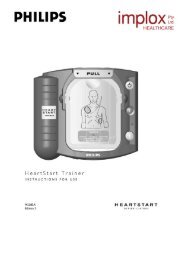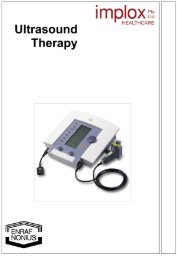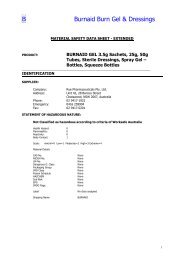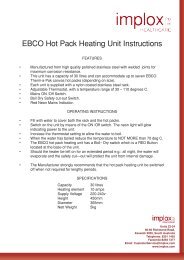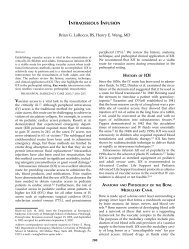Low and medium Frequency Electrotherapy - Implox
Low and medium Frequency Electrotherapy - Implox
Low and medium Frequency Electrotherapy - Implox
Create successful ePaper yourself
Turn your PDF publications into a flip-book with our unique Google optimized e-Paper software.
Fig. 16.<br />
In the four-pole method, the modulation depth is only 100% at the diagonals.<br />
Vector techniques<br />
Additional to the classical Interferential, 3 different dynamic Vector techniques have been developed, which all aim to<br />
increase the treatment possibilities of 4-pole Interferential. The dynamic Vector techniques are used to increase the<br />
effective stimulated area. Each Vector technique distinguishes itself with a specific vector field (Fig. 17 - 19).<br />
Fig. 17<br />
Vector field with Classical<br />
Interferential<br />
Fig. 18<br />
Dipole vector field<br />
Fig 19<br />
Isoplanar vector field<br />
The Vector techniques are not only used to increase the treatment area. The Vector techniques can also be used to<br />
reduce the adaptation.<br />
As already mentioned, the modulation depth is a criteria for the effectiveness of the electrical current <strong>and</strong> is<br />
expressed in a percentage. The stimulation is optimal when the modulation depth is 100%.<br />
With the graphic drawing of the different vectors it is so that, when a cross is shown between the electrodes (as<br />
shown with Isoplanar vector, Fig. 23) there is an optimal stimulation in every direction. If a cross is shown, like with<br />
classical Interferential (see picture 20), it means that there is only effective stimulation in two directions. The electrode<br />
placement is in this case also very critical.<br />
18





